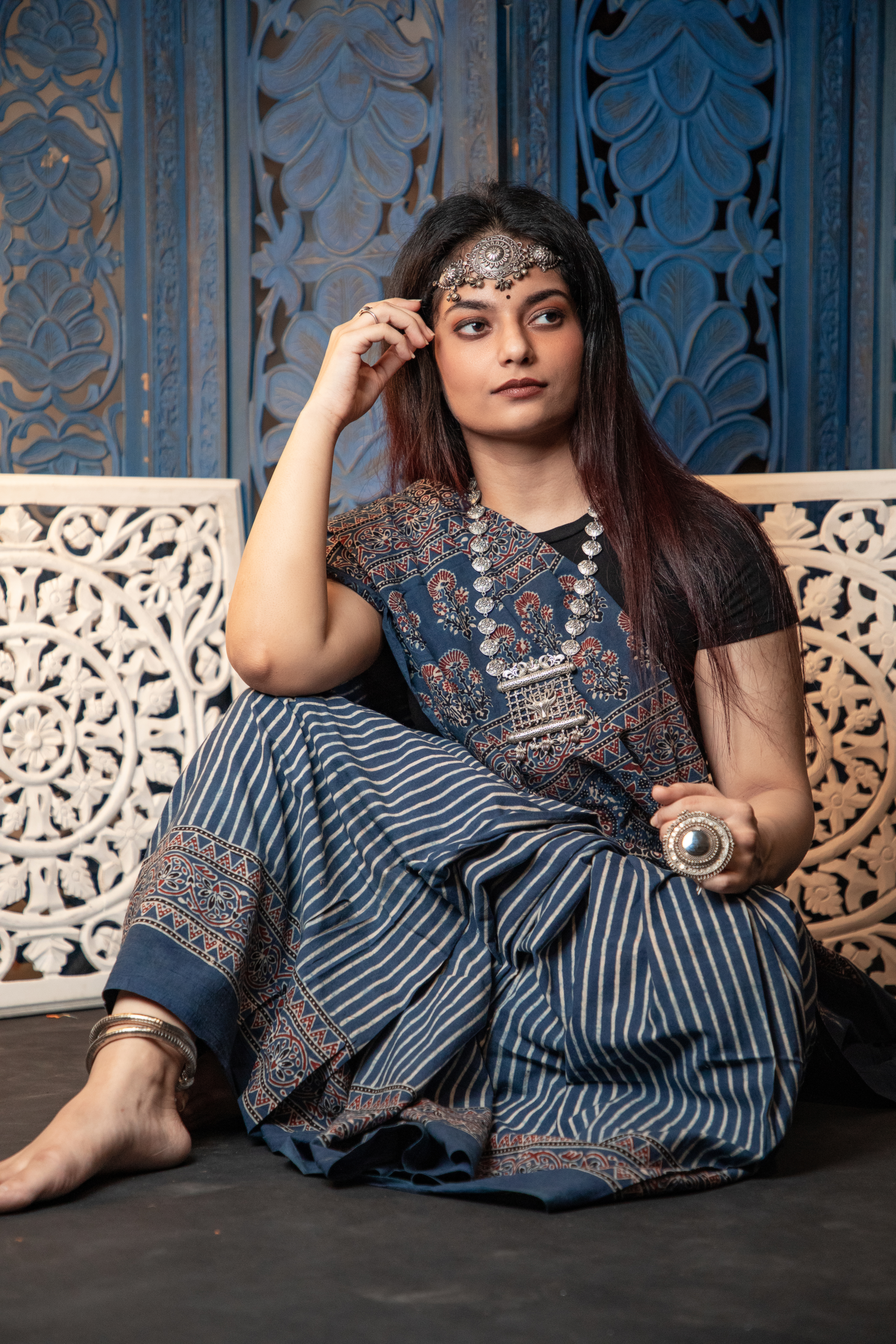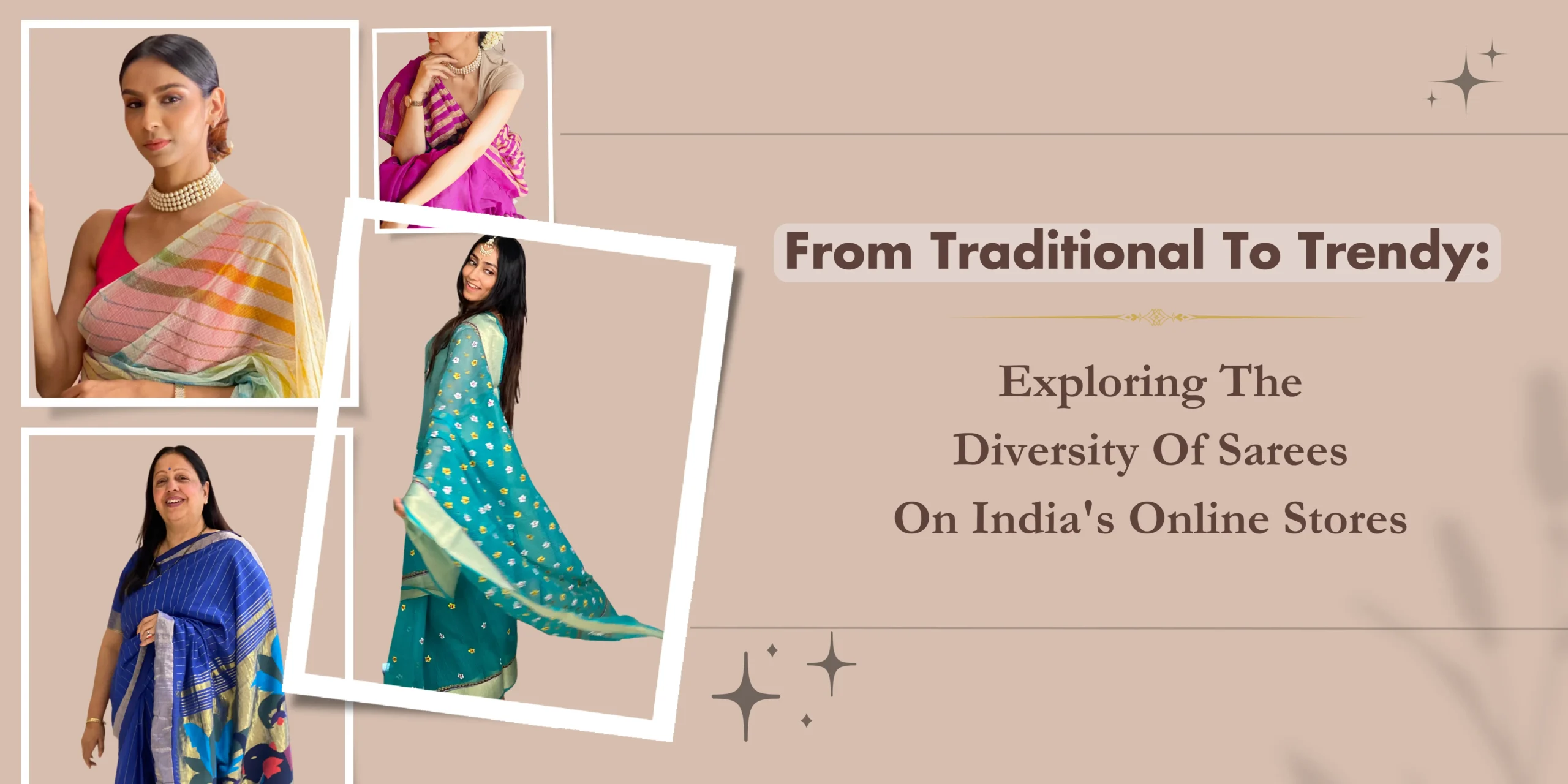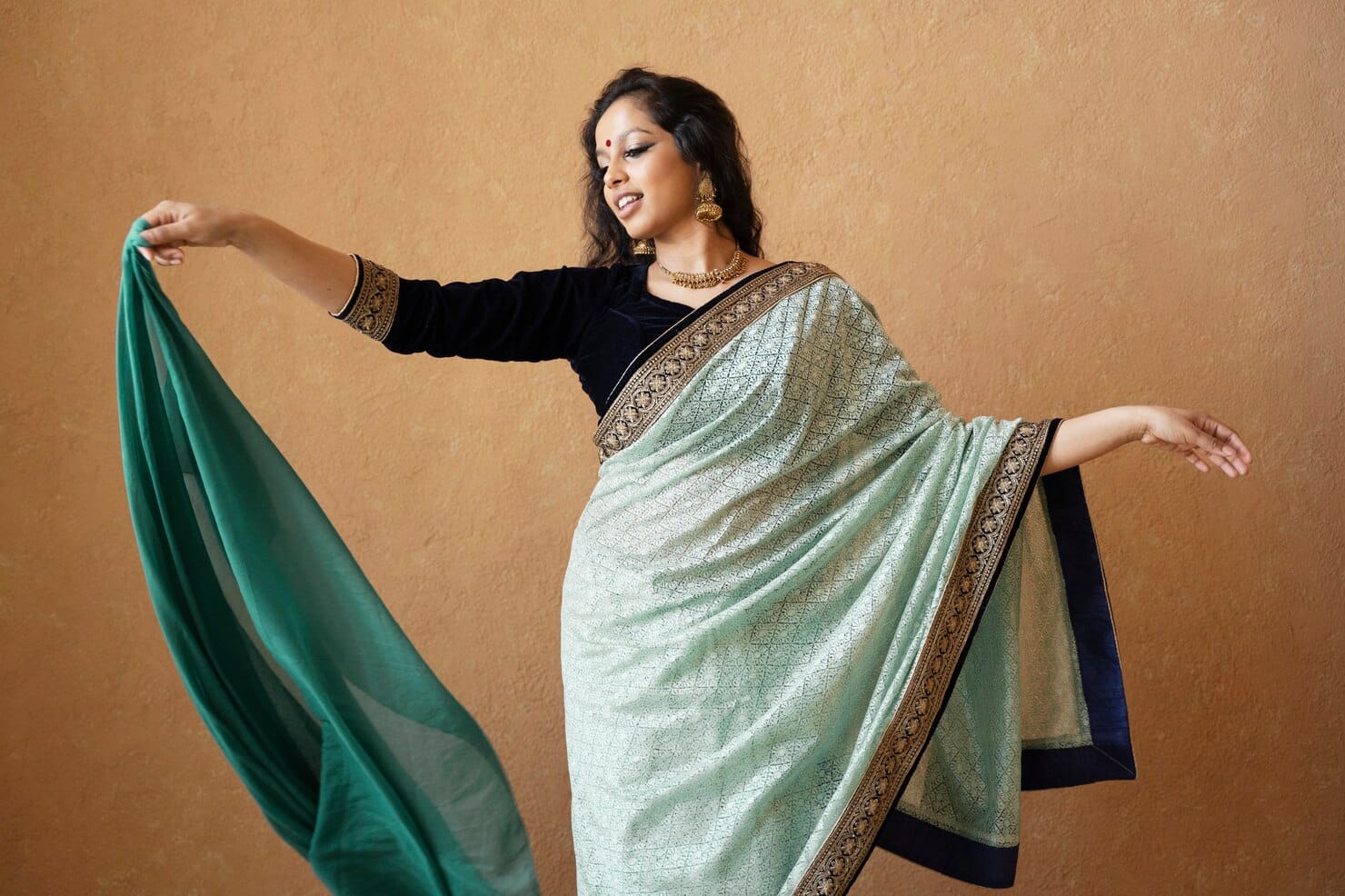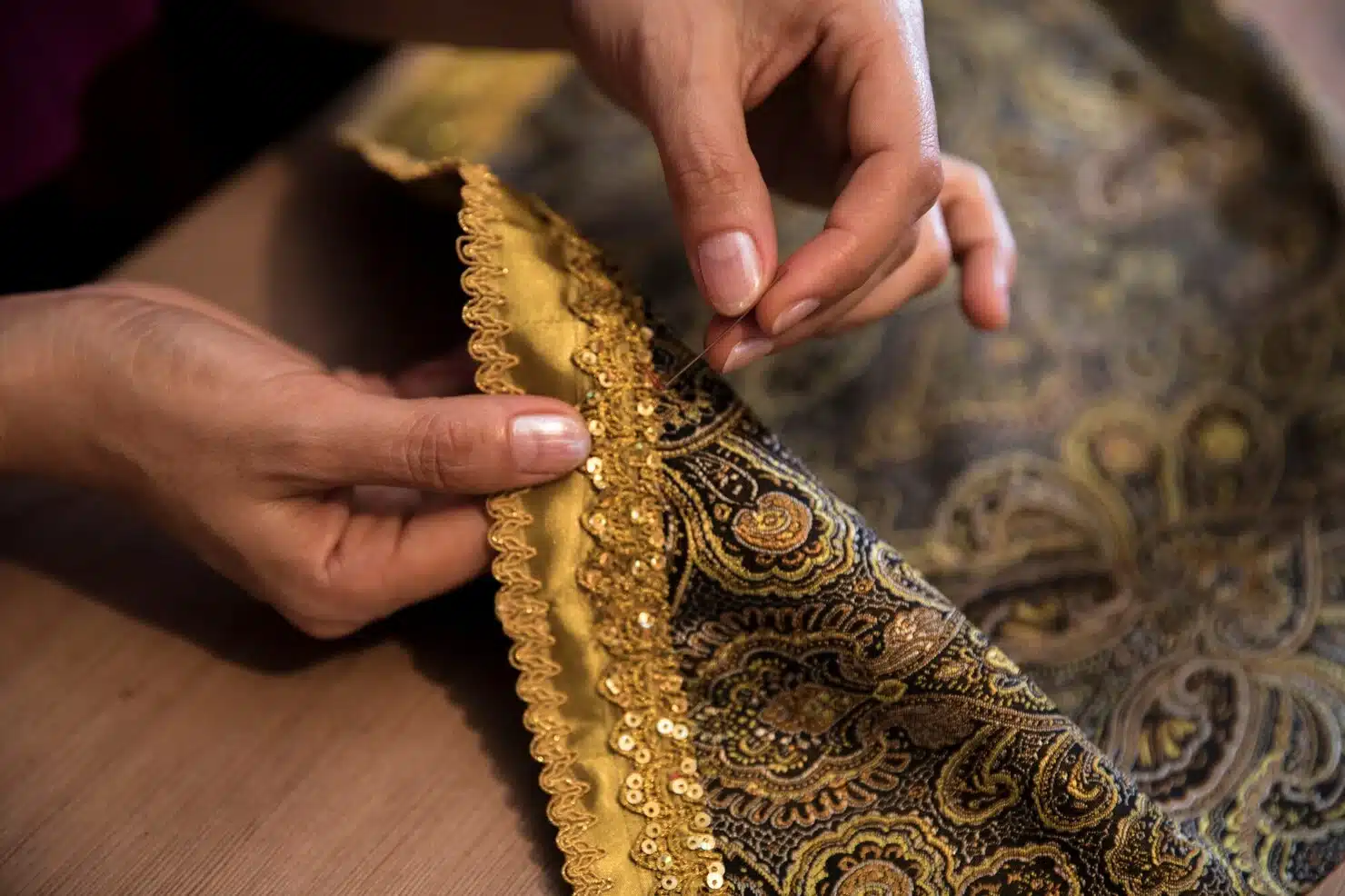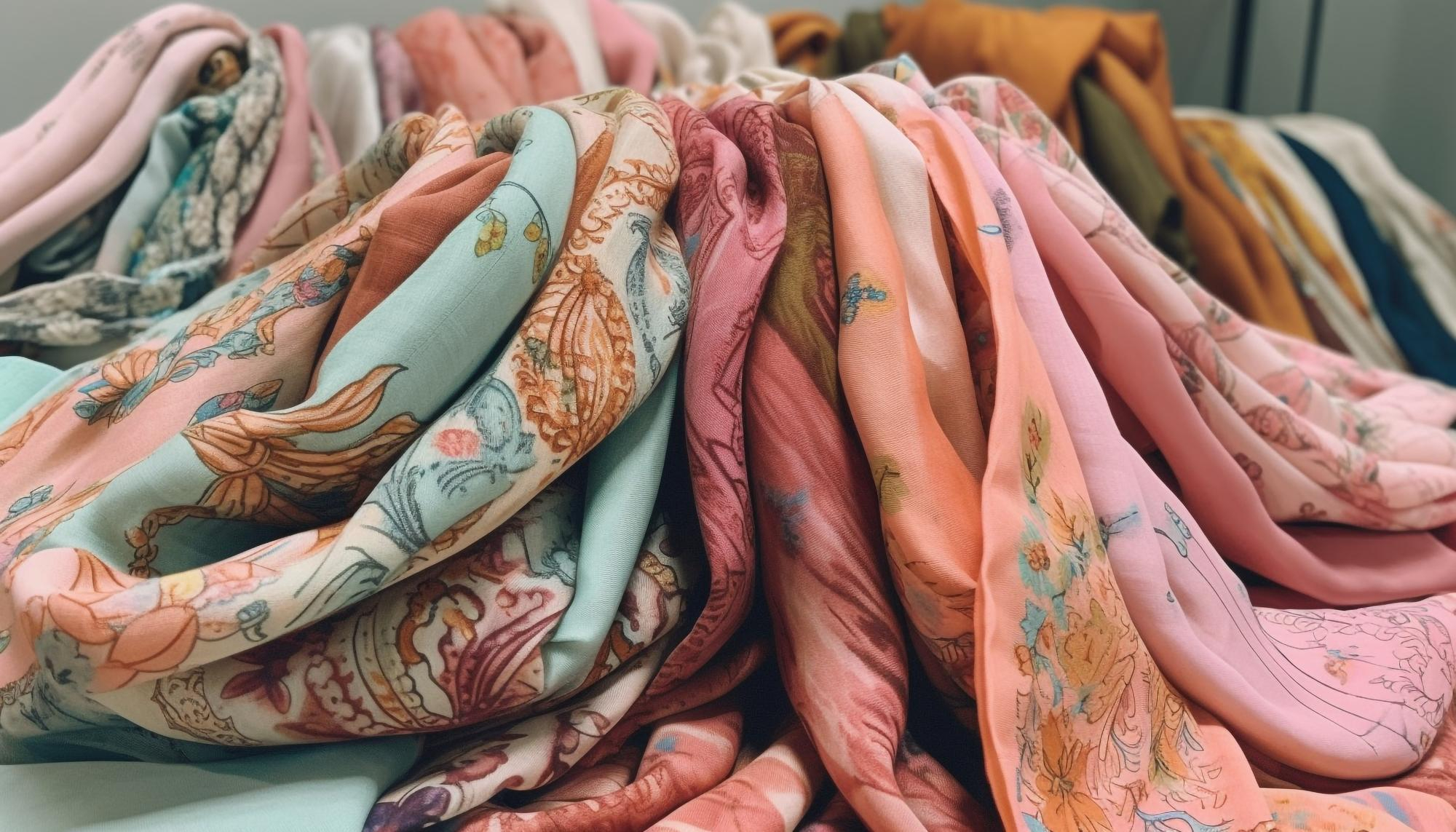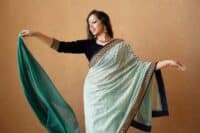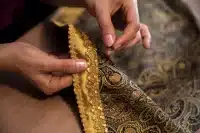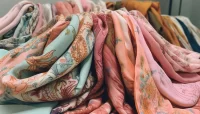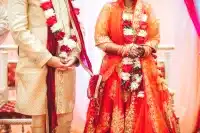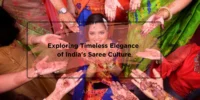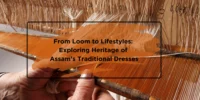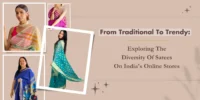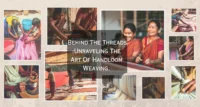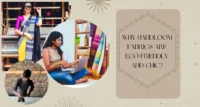In Sanskrit, “sari” translates to “strip of fabric,” a description that belies the profound cultural weight this cloth carries. The saree is not just an attire; it’s a unifying emblem that ties together the past and present, transcending regional boundaries. It is rooted in the Hindu belief that stitching fabric defiled it, leading to the emergence of the unstitched single piece of cloth. The artful draping of four-and-a-half to eight meters of fabric, along with its intricate pleating, has made the saree a versatile choice. Its adaptability to various weather conditions, aesthetic appeal, and suitability for both formal and casual occasions have established it as a favorite among women from all walks of life. Let’s explore many diverse types of saree online in India that you should have in your ethnic closet!
Banarasi Saree from Uttar Pradesh
Often donned by brides during ceremonies, this opulent traditional saree is associated with grandeur and auspiciousness. Crafted from pure silk or Katan silk, Banarasi sarees boast intricate buti patterns, floral designs, and peacocks. Some are adorned with zari or Meenakari work, symbolizing luxury and enduring tradition.
Bandhani Saree from Rajasthan/Gujarat
Bandhani, derived from “Bandhna” and “Bandha,” meaning “tying” or “to knot” in Hindi/Sanskrit, is a tie-and-dye technique. This highly skilled art involves tightly knotting the fabric before dyeing, creating intricate patterns like Chandrakala, Bavan Baug, and Shikari. Primarily using natural colors, Bandhani traditional sarees, known for their vibrant hues, are often worn at weddings and other festive occasions.
Paithani Saree from Maharashtra
The Paithani saree, an opulent creation from Maharashtra, showcases the brilliance of silk and zari. From peacocks to lotuses, every motif carries a story. This queen of Maharashtrian sarees graces weddings and celebrations, symbolizing timeless elegance.
Chanderi Saree from Madhya Pradesh
Chanderi, a town in Madhya Pradesh, is renowned for its weaving heritage. These traditional sarees, made from pure silk, Chanderi cotton, or silk cotton, feature coins, floral art, peacocks, and geometric motifs. The fabric itself, with its rich history dating back to the Mughal era, echoes the artistry of Chanderi.
Lehariya Saree from Rajasthan
Leheriya, the tie-dye technique of Rajasthan, adorns the fabric with captivating wave patterns. The diagonal stripes and vibrant hues make it a global favorite. From festive celebrations to international runways, the leheriya traditional saree brings Rajasthan’s artistic heritage to life.
Chiffon Sarees
Chiffon sarees embody elegance and sophistication with their lightweight and flowy texture. These drapes, crafted from finely woven fabric, offer comfort and grace. Chiffon’s subtle sheen adds a touch of glamour, making it a popular choice for both formal and casual occasions. From delicate pastels to vibrant hues, chiffon sarees offer a diverse color palette. The fabric’s versatility allows it to be paired with various blouse styles, showcasing the wearer’s unique style. Chiffon trendy sarees capture the essence of understated beauty, making them a timeless addition to any wardrobe.
Georgette Sarees
Georgette sarees blend grace and glamour effortlessly. The fabric’s crinkled texture adds dimension, while its lightweight quality drapes elegantly. Georgette trendy sarees often feature intricate embroidery, sequins, or stone work, making them perfect for special occasions. The fabric’s versatility enables it to be styled in various draping techniques. From casual gatherings to formal events, georgette sarees exude sophistication and allure. Their ability to combine comfort with chic aesthetics makes them a favorite among saree enthusiasts.
Bandhej Sarees
Bandhej sarees, also known as Bandhani traditional sarees, celebrate the traditional tie-dye technique. Originating from the regions of Rajasthan and Gujarat, these sarees are a burst of colors and patterns. The intricate process involves tying the fabric before dyeing, creating unique motifs and designs. Bandhej sarees come in a range of styles, from intricate small dots to larger patterns. These sarees showcase the vivacity of Indian culture and are often worn during festivities and celebrations. Bandhej sarees are not only visually striking but also carry the stories of age-old traditions.
Conclusion
In the rich tapestry of India’s saree culture, each fabric tells a unique story of craftsmanship, heritage, and elegance. From the zari-laden charm of Kasavu sarees to the vibrant waves of Leheriya sarees, and the royal heritage of Patola sarees, every saree online reflects the spirit of its region. Chiffon and georgette sarees offer comfort and grace, while Bandhej sarees narrate tales of vibrant tie-dye traditions. Together, these sarees are more than just garments; they are living art forms that connect generations and bridge the past with the present.
FAQ
How Many Types of Sarees Are There?
There are more than 30 different types of sarees, such as Silk sarees like Kanjeevaram and Banarasi, Cotton sarees like Tant and Chanderi, Georgette and Chiffon sarees known for their lightweight feel, and traditional Bandhej sarees.
Which Site is Best for Online Saree Shopping?
Several websites offer a wide range of sarees for online shopping. But, one of the best websites to buy sarees online is The Loom Lane. They have the best variety, designs and styles of traditional and trendy sarees. It's a good idea to read reviews, check for return policies, and ensure the website is secure before making a purchase.

